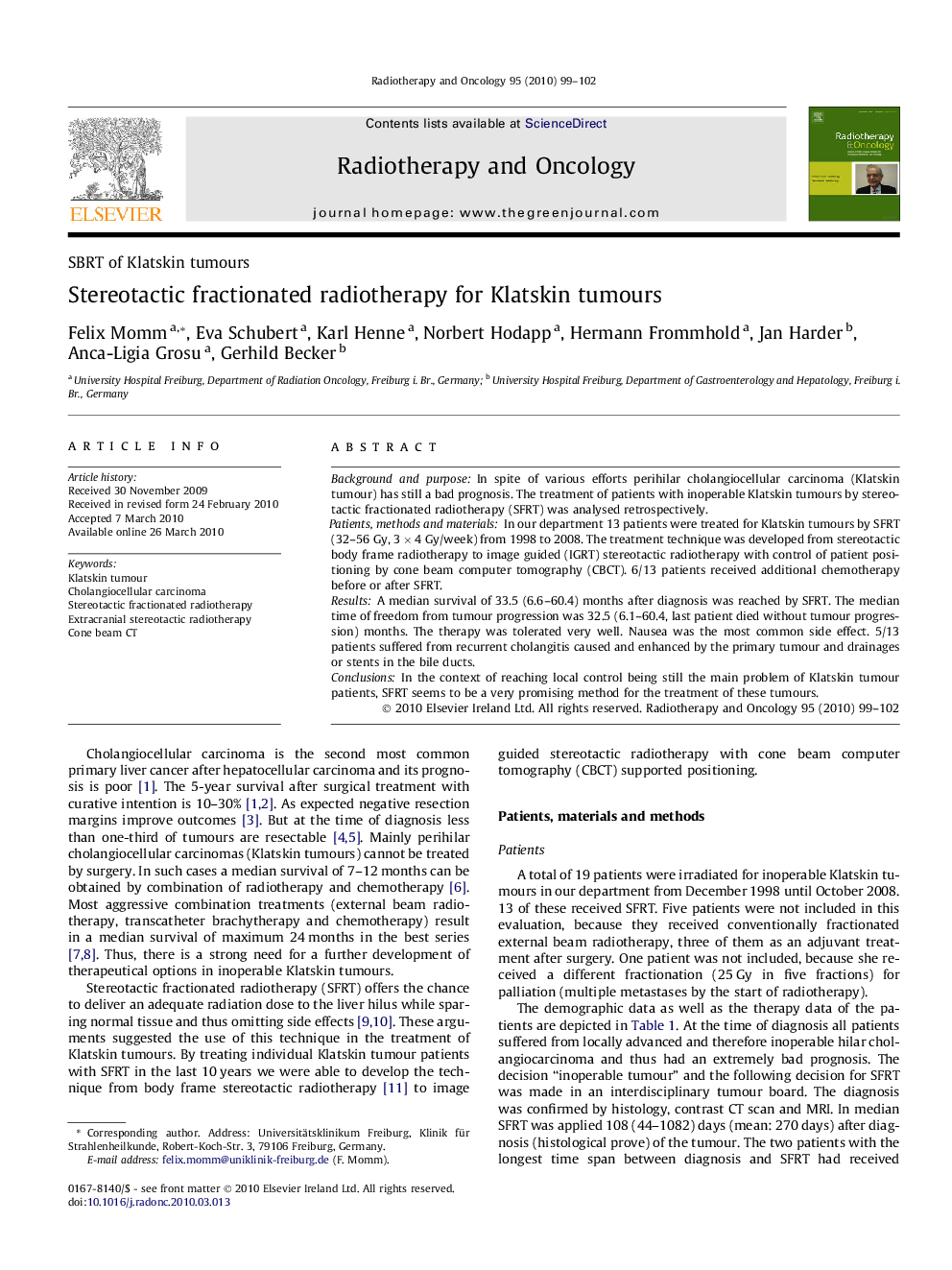| Article ID | Journal | Published Year | Pages | File Type |
|---|---|---|---|---|
| 2159470 | Radiotherapy and Oncology | 2010 | 4 Pages |
Background and purposeIn spite of various efforts perihilar cholangiocellular carcinoma (Klatskin tumour) has still a bad prognosis. The treatment of patients with inoperable Klatskin tumours by stereotactic fractionated radiotherapy (SFRT) was analysed retrospectively.Patients, methods and materialsIn our department 13 patients were treated for Klatskin tumours by SFRT (32–56 Gy, 3 × 4 Gy/week) from 1998 to 2008. The treatment technique was developed from stereotactic body frame radiotherapy to image guided (IGRT) stereotactic radiotherapy with control of patient positioning by cone beam computer tomography (CBCT). 6/13 patients received additional chemotherapy before or after SFRT.ResultsA median survival of 33.5 (6.6–60.4) months after diagnosis was reached by SFRT. The median time of freedom from tumour progression was 32.5 (6.1–60.4, last patient died without tumour progression) months. The therapy was tolerated very well. Nausea was the most common side effect. 5/13 patients suffered from recurrent cholangitis caused and enhanced by the primary tumour and drainages or stents in the bile ducts.ConclusionsIn the context of reaching local control being still the main problem of Klatskin tumour patients, SFRT seems to be a very promising method for the treatment of these tumours.
